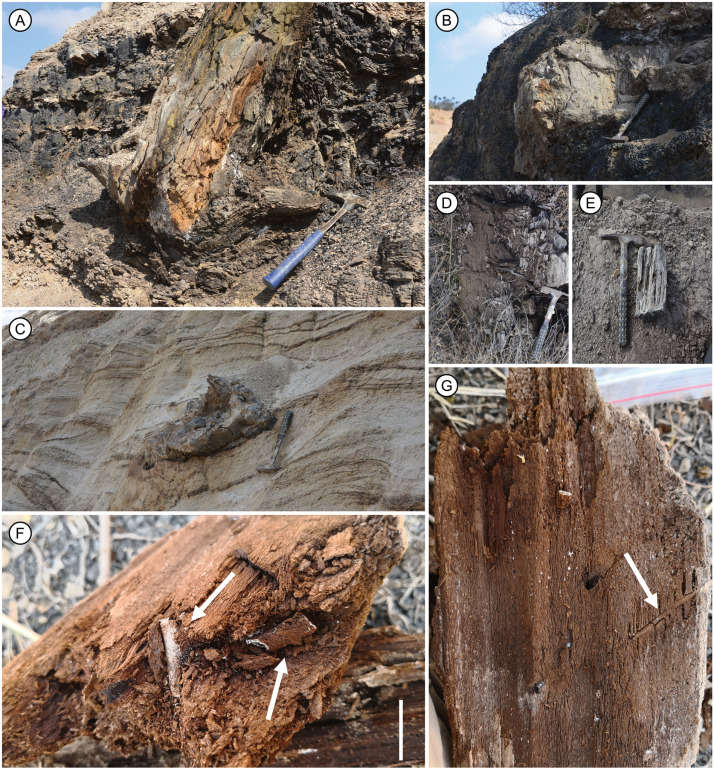Based on an early geochronological study, the Lühe coal mine strata were identified as late Miocene and belonging to the Xiaolongtan Formation. Previous research on the Lühe sediments has led to the discovery of numerous fossils, such as woods, leaves, and fruits. Nevertheless, no fossil insects have been discovered so far from the succession.
In a study published in Review of Palaeobotany and Palynology, researchers from Xishuangbanna Tropical Botanical Garden (XTBG) presented first report of extensive arthropod and fungal traces in the Oligocene Lühe flora and showed a new wood fossil record of Taxodioxylon in this region.
The Cupressaceae fossil tree stumps from the early Oligocene Lühe coal mine in southwestern China contain abundant quartz-petrified damage traces. The researchers assigned the wood fossils to Taxodioxylon sp., an affinity to extant Taxodiaceae (now in Cupressaceae) as it contains all listed characters of this family. It shows little resemblance to Cryptomeria, Cunninghamia, Sequoia, Metasequoia, Taiwania, and the other listed fossil species.
The Taxodium-like deciduous Cupressaceae fossil wood in the coal mine, together with other reported fossil Cupressaceae genera in Yunnan Province, represent relict plants that once dominated the Northern Hemisphere during the Late Cretaceous and Paleogene.
“This first-ever report of Taxodium-like fossil from the Oligocene of southwestern China points to Yunnan serving as a refugium for some lineage of gymnosperms at that time,” said SU Tao of XTBG.
“Our work provides new insights into the sedimentary environment and herbivorous activities within the Oligocene Lühe flora,” added SU Tao.
Contact
SU Tao Ph.D Principal Investigator
Key Laboratory of Tropical Forest Ecology, Xishuangbanna Tropical Botanical Garden, Chinese Academy of Sciences, Mengla, Yunnan 666303, China
E-mail: sutao@xtbg.org.cn
(A–E) Different wood fossils preserved in Lühe coal mine section, A and B is embedded in a lignite layer, C is embedded in a siltstone layer. D and E represent lignified and coalified wood. (F–G) Some of the fossil wood that contains tunnel like ichnofossils. (Images by DENG Weiyudong)

